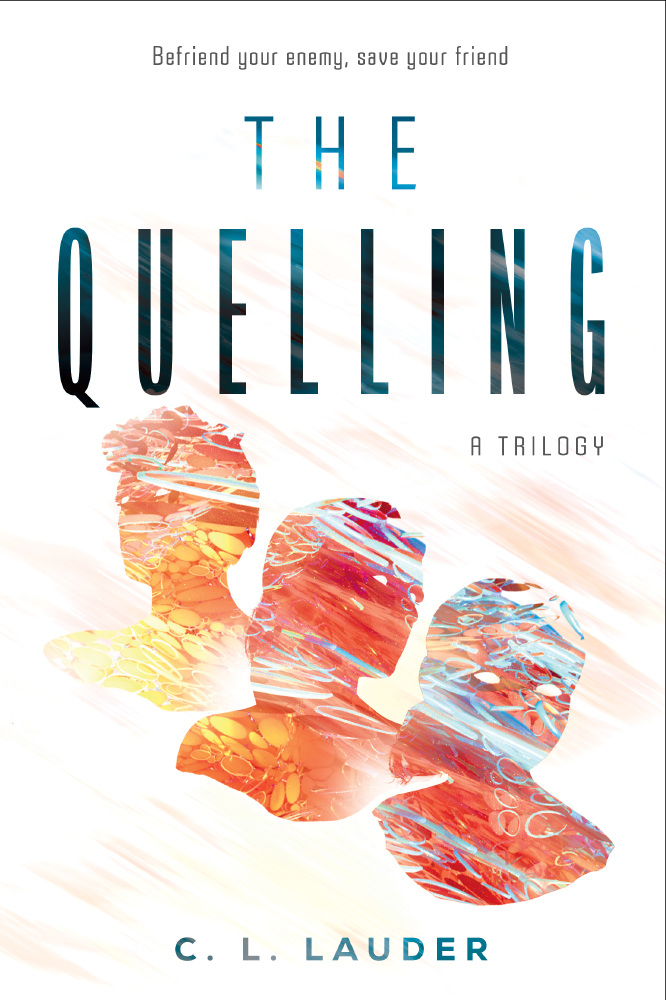I write young adult sci-fi for two reasons: first and foremost, the idea that the Universe is populated elsewhere both excites and terrifies me (so I have to explore it!) and secondly, it gives me total freedom to make stuff up. When you build a world set in a different time, on a distant planet with unique influences, tracking how things work and who’s who can be overwhelming. Here are my tips and tricks for ensuring your lore isn’t lawless.

Author Carla Lauder
History first
They say that history is written by the victors, which suggests that the winner owns the story. I like to think of history as an unreliable character. There’s the truth, and then there’s the representation of events through the eyes of your key cultures. These quagmires of conflict can be mined for nuggets of inspiration. In the first novel of The Quelling Trilogy, the Rhemans don’t see themselves as invaders; they are simply reaping what they have sown. In counterpoint, the Aurora Saurins are traumatized by the Rheman’s arrival and prolonged occupation. This conflict forms the premise and makes a compelling backdrop for exploring the themes.
One tool I depend on heavily is Scrivener. This app enables me to navigate between chapters and scenes effortlessly, while also keeping handy folders you can fill with templated settings sheets. It’s easy to adapt the settings template to track fact-finding (or fact production, in my case) for fictional regions or planets. Alternatively, you can start from scratch, creating templates of your own.
Get the lay of the land
I’m a visual person, so the first order of business is to sketch out a map. This helps me to understand the distances my characters will travel, the obstacles they may face, like mountain ranges or rivers, and the types of people they might encounter in each region. If you like things to be pretty, hop onto Fiverr and get your map professionally created. Since Scrivener supports pictures, you can include the map in your setting sheet or, for a fully immersive experience, get it framed and hung on your wall.
Glossaries aren’t just for readers
One thing I failed to do when publishing The Quelling was include a glossary, even after my editor recommended it. This is an oversight I regret. When multiple races and factions are competing for control, a glossary can anchor your readers in the story, and there’s no reason the same wouldn’t be true for the author in the early days, before being fully steeped in the lore.
Characters before plot
Once I understand the settings, I’ll add a character sheet for the key players to my characters folder in Scrivener. If I’m developing a sci-fi character who defies reality, I’ll use an AI image generator to create a picture of the extra-terrestrial so I can refer back to it when describing the creature, keeping all descriptions in sync. While creating characters, I’ll note broader themes in Scrivener in the notes section, detailing factions and cultural nuances as I uncover them.
Plot as a priority
For me, a novel arrives in three phases. There’s the plot, the draft, and the edited work—each taxes a different part of the brain. While plotting, my ideas generally come to me while walking or drifting to sleep. I use an audio recorder on my phone to record ideas while walking and keep a notepad and pen at my bedside in case inspiration strikes in the night. I use a simple Excel template to set out a four-act structure, each with fifteen scenes. While working through these scenes, focusing on the purpose, action, and character development, the Universe and its lore will evolve. Things I can’t fully explain yet will go into a second tab called Q&A, which I’ll ponder on my next walk, and so it goes on until the full picture emerges.
Draft like nobody’s watching
While writing the draft, I’m constantly updating the notes section on each Scrivener scene, summarising the scene, and tracking anything obscure I might have trouble remembering. It's essential to keep the flow going, so if I come up against something that contradicts the lore and set-up already in place, I note it down and return to it later.
Find an Editor in Beast Mode
It's imperative to have a fearless developmental editor who will unmask the holes in your story without concern for your sensitive creator core. If my editor raises a point I can’t instantly solve by slotting in some additional text, I write it on a piece of paper and read it as I climb into bed; that way, my unconscious can get to work on it while I sleep. Incorporating an idea into your story spawned from a blocker that once kept you awake at night can be addicting.
An ear for errors
Once I’ve been through a developmental edit, I’ll upload the book to an app called Voice Dream and listen to it repeatedly, trying to spot any issues I didn’t pick up during the writing and editing process. An audio review is my preferred editing method because the eye skips over things that the ear never would. Issues are tracked on my phone’s notes app so I can correct them later.
And that is how I like to create a lore-abiding manuscript, if you'll pardon my painful puns. I hope these tips and tricks help you as loremaker of your own fantasy Universe.
Author Bio
About Carla Lauder:
Carla Lauder grew up in South Africa before immigrating to the United Kingdom, where she attended the University of London to complete a Bachelor of Science in Information Systems and Computing, followed by an MA in Creative Writing. She now lives at the foot of a lush mountain in Hong Kong with her husband, and two rapidly lengthening sons, who enjoy their newfound proximity to nature, especially the sea.
Her Latest Book The Quelling
Out 16th January 2024

When you’re Stained, patches of skin glisten like liquid starlight, and sooner or later, his creatures find you.
In a world of curfews and body raiders, where people huddle in bunkers to avoid being taken by the invading Rhemans, nineteen-year-old Kyjta has one objective: to rescue her young charge, Calipsie.
Forming an improbable alliance with the enemy, a Rheman named Kranik, Kyjta must not only save Calipsie, but also face down the Rheman overlord who’s taken a disturbing interest in her.
Connect with Carla Lauder at cllauder.com or on Instagram, Facebook, or X .
Tagged in Sci Fi author facts

